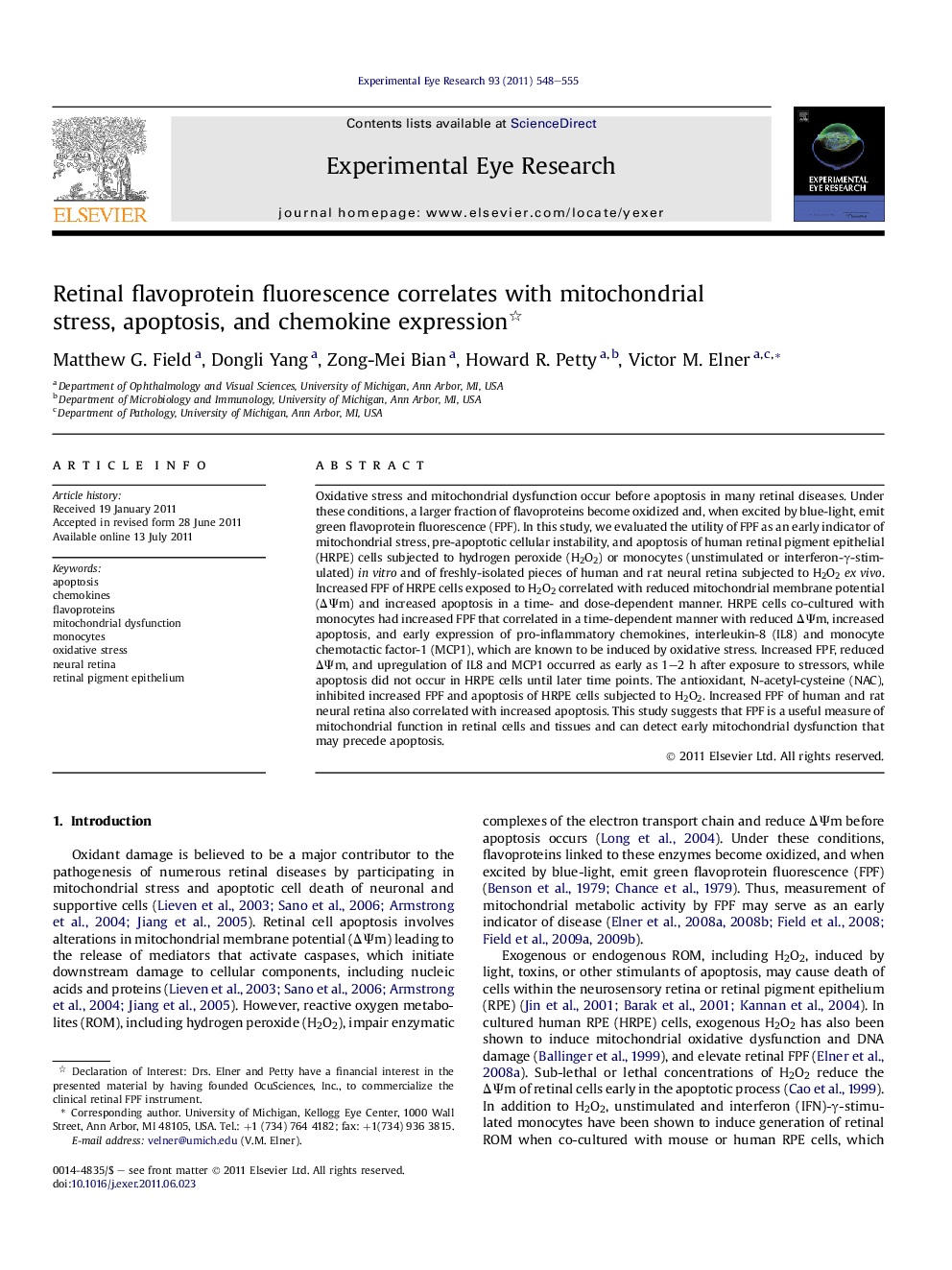| Article ID | Journal | Published Year | Pages | File Type |
|---|---|---|---|---|
| 4011597 | Experimental Eye Research | 2011 | 8 Pages |
Oxidative stress and mitochondrial dysfunction occur before apoptosis in many retinal diseases. Under these conditions, a larger fraction of flavoproteins become oxidized and, when excited by blue-light, emit green flavoprotein fluorescence (FPF). In this study, we evaluated the utility of FPF as an early indicator of mitochondrial stress, pre-apoptotic cellular instability, and apoptosis of human retinal pigment epithelial (HRPE) cells subjected to hydrogen peroxide (H2O2) or monocytes (unstimulated or interferon-γ-stimulated) in vitro and of freshly-isolated pieces of human and rat neural retina subjected to H2O2ex vivo. Increased FPF of HRPE cells exposed to H2O2 correlated with reduced mitochondrial membrane potential (ΔΨm) and increased apoptosis in a time- and dose-dependent manner. HRPE cells co-cultured with monocytes had increased FPF that correlated in a time-dependent manner with reduced ΔΨm, increased apoptosis, and early expression of pro-inflammatory chemokines, interleukin-8 (IL8) and monocyte chemotactic factor-1 (MCP1), which are known to be induced by oxidative stress. Increased FPF, reduced ΔΨm, and upregulation of IL8 and MCP1 occurred as early as 1–2 h after exposure to stressors, while apoptosis did not occur in HRPE cells until later time points. The antioxidant, N-acetyl-cysteine (NAC), inhibited increased FPF and apoptosis of HRPE cells subjected to H2O2. Increased FPF of human and rat neural retina also correlated with increased apoptosis. This study suggests that FPF is a useful measure of mitochondrial function in retinal cells and tissues and can detect early mitochondrial dysfunction that may precede apoptosis.
► Flavoprotein fluorescence is an indicator of mitochondrial dysfunction. ► Oxidative stress and monocytes increase retinal flavoprotein fluorescence. ► Increased flavoprotein fluorescence correlates with increased chemokine expression. ► Flavoprotein fluorescence is an early indicator of cells prone to undergo apoptosis.
